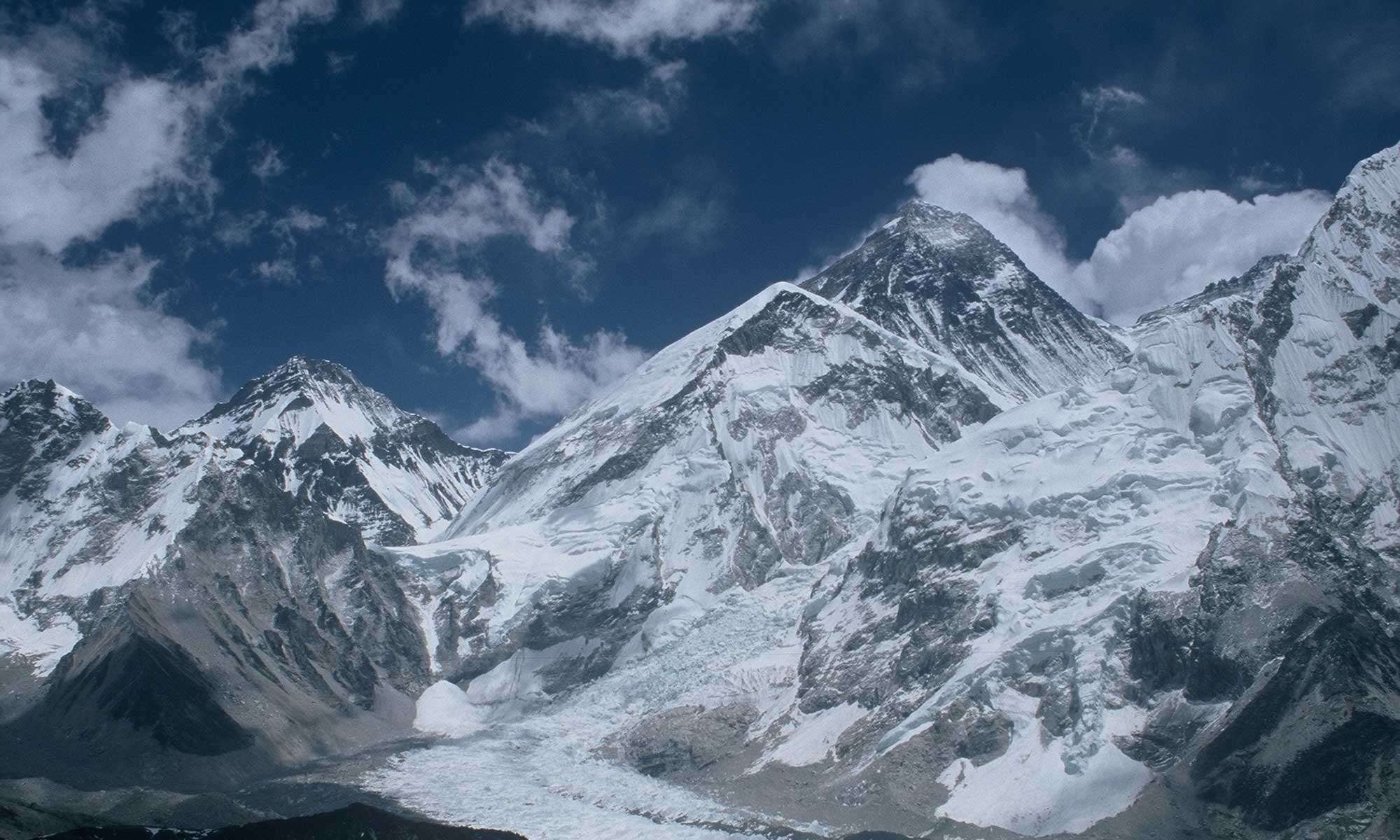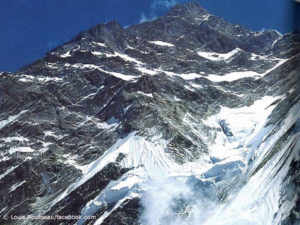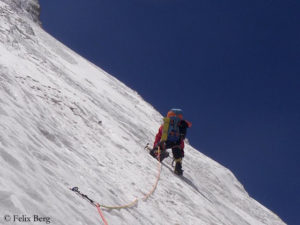The first eight-thousander summit successes of the spring season are expected this year on the 8,091-meter-high Annapurna I in western Nepal. The Sherpa team, that is fixing the ropes for the commercial teams, has already secured the normal route almost all the way up to Camp 3 at around 6,400 meters. “We wait for the summit weather window,” announced yesterday Nirmal Purja, head of the operator Elite Exped.
Most teams will probably have already left Annapurna by the time Felix Berg and his Polish teammates Adam Bielecki and Mariusz Hatala arrive at base camp. “Most of them want to go on to Everest, Lhotse, Kangchenjunga or somewhere else afterwards,” Felix tells me on the phone. “After all, it has become fashionable to conquer as many eight-thousanders as possible in a short time by any means possible.”
Acclimatization on Himlung Himal
The Polish-German trio set a different, ambitious goal: a new route through Annapurna’s rarely climbed Northwest Face. In spring 2017, Bialecki, Berg and Scottish climber Rick Allen (1953-2021) had turned back on the wall at 6,500 meters due to bad weather. Currently, Bielecki and Hatala are getting used to high altitude in the mountains of northern Chile. Felix Berg, who is preparing with a hypoxia tent and tours in the Alps, leaves for Nepal on 22 March. There the trio will meet to complete acclimatization on the seven-thousander Himlung Himal. Afterwards, they plan to fly by helicopter to Annapurna Base Camp.
I spoke with Felix Berg about the upcoming expedition. The 42-year-old German climber has scaled four eight-thousanders so far: twice – with bottled oxygen – Mount Everest (in 2004 and 2021) and, each without breathing mask, Broad Peak (in 2014), Cho Oyu (in 2018) and Gasherbrum II (in 2018).
Felix, you have again set your sights on the Northwest Face of Annapurna. Are you planning to climb the same route as in 2017?
Yes, via the same route as back then.
Six years ago, you only got up to 6,500 meters. That was a tough climb. What makes you optimistic that it could be better this time?
Now we know what we’re getting into. We had bad weather then, every afternoon there was precipitation. We hope to have three or four days of stable weather for this wall. Then it should be doable.
In 2017, the British Rick Allen was still part of your team. He died in summer 2021 on K2. Are you climbing for him now?
I got to know Rick on the expedition back in the day. It is tragic and a pity that he is no longer around. He was a fascinating personality, a down-to-earth person who, however, also sought out experiences on the limits. Of course, it would be nice if he were still around now.
From the 2017 team, you are joined by the Pole Adam Bielecki. How often have you been en route with him?
It will be our fourth joint major expedition after the first attempt on Annapurna Northwest Face, (the eight-thousander) Gasherbrum II in 2018 and (the seven-thousander) Langtang Lirung in 2019. But beyond that, we have also done smaller tours together more often, such as on Mount Kenya or in the Pyrenees and Alps.
With Mariusz Hatala you have another Pole in the team. Have you already met him on the mountain?
We haven’t done anything together on the mountain yet. Last year he climbed Broad Peak and K2 in Pakistan in nine days without bottled oxygen, so he can handle high altitude. With Adam he has also done some tours in the High Tatras. I trust that it will work out well with him.
In what style will you be on the road?
As light as possible, you can call it alpine style. Certainly we will not use bottled oxygen, we will not fix ropes and we will not be supported by Sherpas. But is it still alpine style if you already know part of the route? I don’t know. (laughs)
How much time do you give yourselves for the wall?
I think we can climb it in two to three days, four at the most. We have until mid-May at the latest for the expedition.
You said in 2017 about your last camp on the wall that you would have been better off taking a portaledge than a tent because of the sloping ground. Is it part of your pack this time?
No, a portaledge is too heavy. We’ll try ultralight hammocks this time, which only weigh around 200 grams.
Have you tweaked the equipment in any other way?
For sure it will be optimized compared to last time – what equipment we need, for how many days we take food. We will certainly be lighter en route.
How big do you think the chances are that you’ll get higher this time than in 2017, maybe even to the summit?
It’s difficult to say. It depends on the conditions, you need the necessary bit of luck. But I assume that we have the ability to climb this route. However, it may have changed a lot in the past six years. There is a lot of uncertainty involved. But with an adventure expedition like this, the attraction lies in the unknown.




